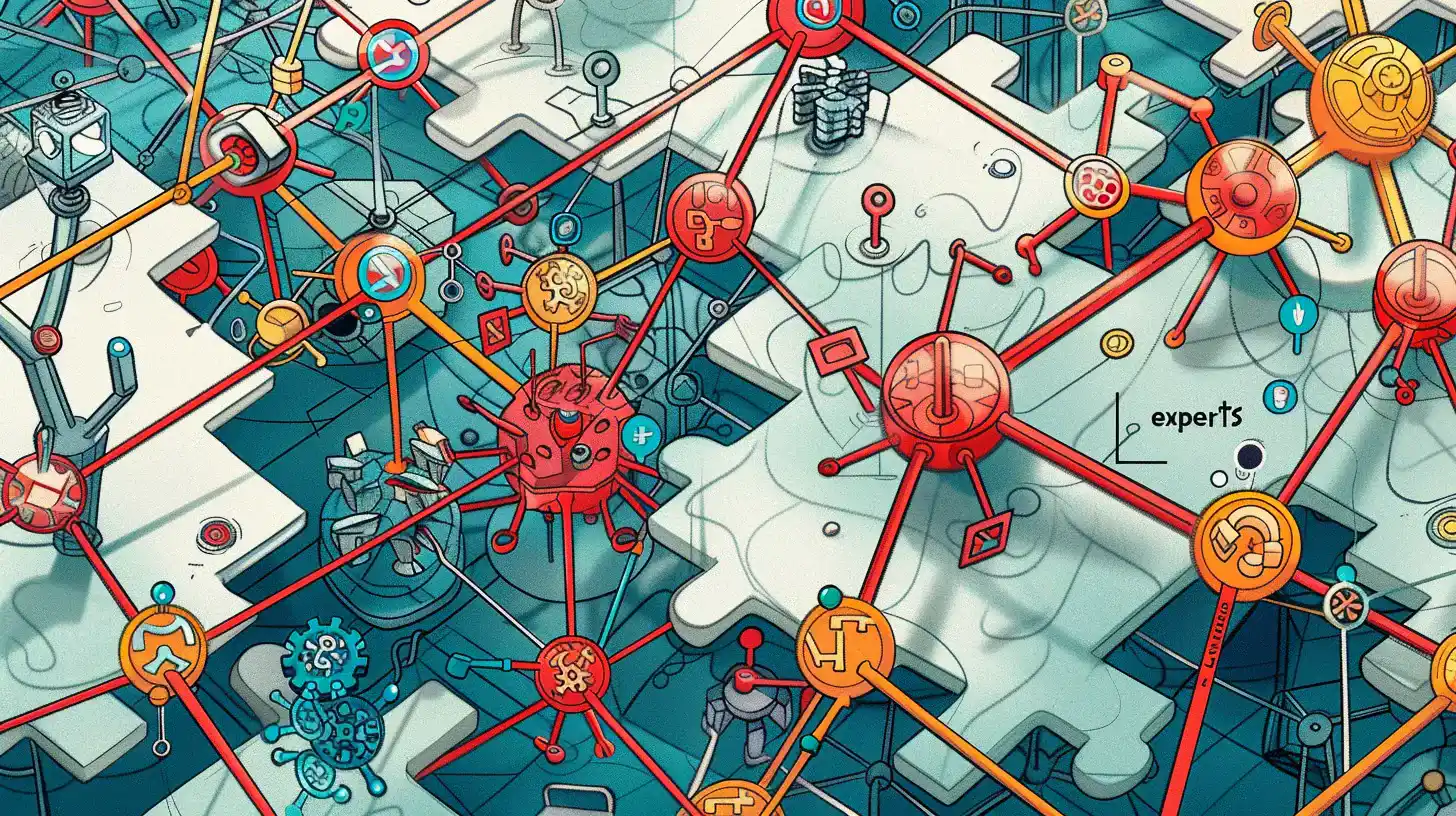Table of Contents
Databricks Inc. unveiled its groundbreaking general-purpose large language model, DBRX, boasting superior performance over existing open-source models and even some proprietary ones on standard benchmarks.
Mission to Democratize AI: Encouraging Open-Source Adoption
The company’s decision to open-source the model is driven by a mission to encourage customers to transition away from commercial alternatives. A recent survey by Andreessen Horowitz LLC revealed a keen interest among artificial intelligence leaders in leveraging open-source models, especially when their performance matches that of proprietary ones.
Databricks Chief Executive, Ali Ghodsi, emphasized the importance of unlocking valuable enterprise data, stating, “The most valuable data is sitting inside enterprises.” He highlighted the role of open-source models in enabling access to this data.

DBRX incorporates a “mixture-of-experts” architecture, which divides the learning process among specialized subnetworks called “experts.” Each expert excels in a specific aspect of the designated task, with a “gating network” optimizing the allocation of input data among them.
Built on the MegaBlocks open-source project, DBRX offers enhanced training speed and compute efficiency, specifically tailored for text-based applications. This focus distinguishes it from multimodal models, which also incorporate video and image data.
Naveen Rao, Databricks Generative AI Vice President, highlighted the transformative potential of the MoE architecture, likening its operation to that of the human brain. Rao, who co-founded MosaicML Inc., now part of Databricks, initially held reservations about MoE but now champions its effectiveness.
DBRX: Revolutionizing AI Infrastructure and Integration
Ghodsi underscored DBRX’s relevance in use cases requiring critical governance and security, such as financial services and healthcare, as well as scenarios where response tone matters, such as customer self-service.
However, leveraging it demands substantial computing power, necessitating a PC or server equipped with at least four Nvidia Corp. H100 GPUs. Despite its considerable size, boasting 132 billion parameters, DBRX operates twice as fast as comparable models like Llama 2.
The model’s $10 million training cost over two months underscores its complexity and scale. Despite its size, DBRX is designed to function efficiently, dynamically selecting experts at runtime to optimize inference workloads.
Tony Baer, a principal at dbInsight LLC, highlighted its innovative design, which allows it to operate effectively as a smaller model, thus reducing inference workloads. He emphasized Databricks’ pioneering role in adopting this emerging approach.

DBRX can be seamlessly integrated with Databricks Mosaic AI, a comprehensive suite of tools for building, deploying, and monitoring AI models. This integration ensures the development and deployment of generative AI applications that prioritize safety and accuracy while retaining control over data.
Developers can access DBRX for both research and commercial use via GitHub and Hugging Face. Its long-context capabilities enable developers to incorporate retrieval-augmented generation systems, fostering the creation of custom DBRX models on the Databricks platform.
Baer commented on Databricks’ strategic move into the general-purpose language model space, acknowledging the company’s trajectory since the MosaicML acquisition and its substantial funding. He noted the significant training requirements in this space, which favor well-capitalized entities like Databricks.
Databricks aims to disrupt the landscape by democratizing access to advanced language models, challenging established players like OpenAI, and Anthropics, and Coheres with its innovative DBRX offering.
Catalyzing the Shift Towards Open-Source AI Solutions
Databricks’ release of DBRX marks a pivotal moment in the evolution of language models, signaling a shift towards open-source solutions in the AI landscape. With its emphasis on accessibility and performance, DBRX is poised to drive widespread adoption across various industries.
In sectors like finance and healthcare, where data governance and security are paramount, DBRX offers a compelling solution. Its advanced capabilities enable organizations to extract valuable insights from vast amounts of data while maintaining stringent regulatory compliance.
Moreover, DBRX’s ability to discern nuances in tone and context makes it particularly well-suited for applications like customer self-service, where personalized interactions are crucial for enhancing user experience.
Despite its computational demands, DBRX’s efficiency and scalability position it as a viable option for businesses seeking to harness the power of AI. By leveraging Databricks’ comprehensive suite of AI tools, organizations can streamline the development and deployment of AI applications, accelerating innovation and driving competitive advantage.
Looking ahead, Databricks is committed to advancing the field of AI through continued research and development. As the demand for sophisticated language models continues to grow, DBRX stands as a testament to the company’s dedication to democratizing AI and empowering organizations to unlock the full potential of their data.
In conclusion, DBRX represents a significant milestone in the journey towards AI democratization. By offering a high-performance, open-source alternative to proprietary models, Databricks is paving the way for a future where AI is accessible to all, driving innovation and transformation across industries.





